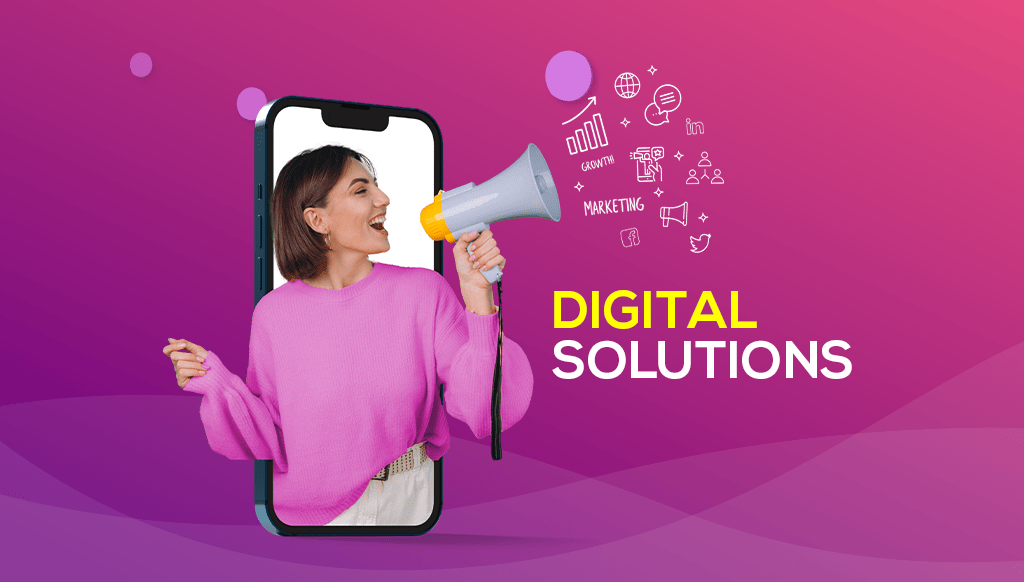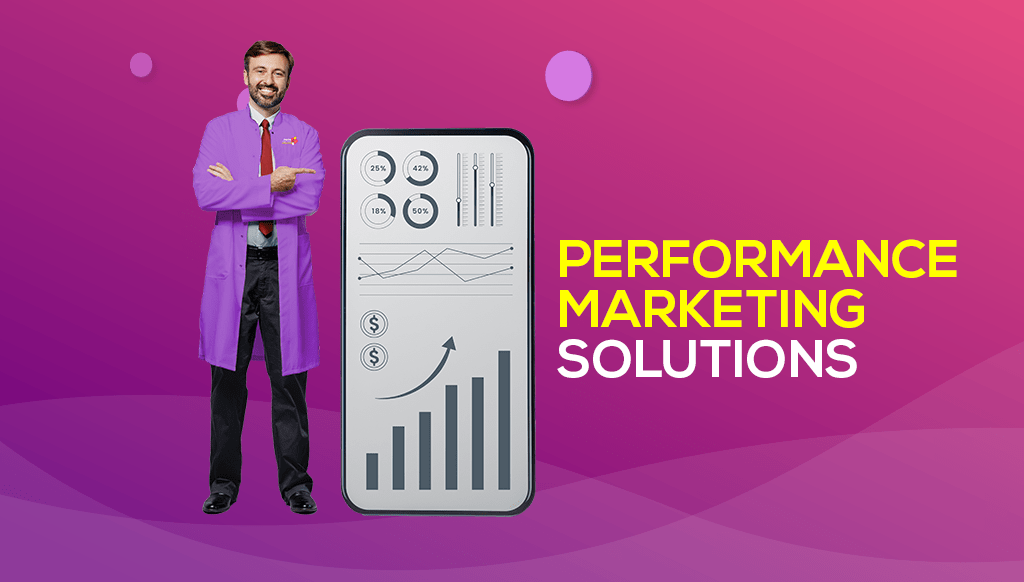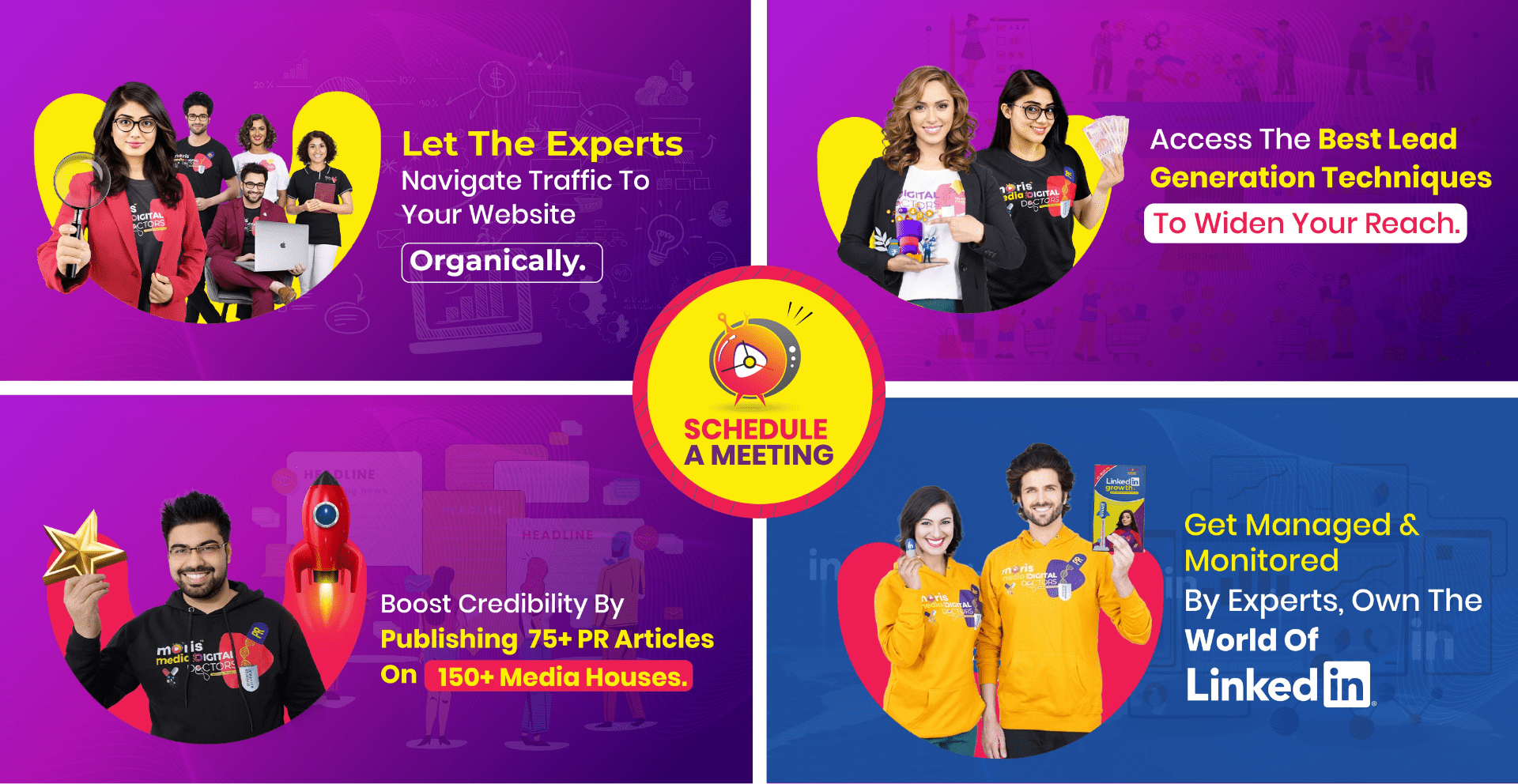Frequently Asked Questions
The frequency of posting on social media can vary depending on the specific social media platform and your audience's behavior. Here are some general guidelines:
Facebook: Businesses should aim to post on Facebook at least 3-5 times per week, but no more than once per day.
Twitter: Businesses can post on Twitter more frequently, with 3-5 tweets per day being a good starting point.
Instagram: Businesses should aim to post on Instagram at least once per day, but no more than three times per day.
LinkedIn: Businesses can post on LinkedIn once per day or a few times per week.
Pinterest: Businesses should aim to post on Pinterest at least once per day, but no more than 5-10 times per day.
Digital Doctors at Moris Media caution you that these are general guidelines and may vary depending on your specific audience's behavior and preferences. Consistency is key, so your business should aim to create a regular posting schedule that is compatible with your audience and the resources that you have at your disposal.
Moris Media identifies the challenges involved in managing multiple social media and suggests several strategies and tools you can use to make the process more efficient:
Use a social media management tool: Use a social media management tool such as Hootsuite, Buffer, or Sprout Social to manage multiple accounts from a single platform.
Create a content calendar: Develop a content calendar that outlines when and what content will be published across your different social media accounts.
Delegate responsibilities: Assign roles and responsibilities to team members to ensure that each social media account is being managed effectively.
Monitor comments and messages: Use a social media management tool or set up notifications to monitor comments and messages across your different accounts and respond promptly.
Repurpose content: Repurpose content across different social media accounts to save time and increase efficiency.
Analyse data: Analyse data and social media metrics to determine which accounts are performing well and where you can make improvements.
Connect with the Digital Doctors at Moris Media to know more.
Digital Doctors at Moris Media suggest some best practices that can help businesses to effectively monitor their social media presence, build their brand reputation, and stay ahead of industry trends.
Set up alerts: Use social media monitoring tools or set up notifications to receive alerts for mentions of your brand, products, or industry keywords.
Respond promptly: Respond to comments, mentions, and messages promptly to show your followers that you are listening and value their feedback.
Monitor your competition: Monitor your competitors' social media activity to identify opportunities and stay ahead of industry trends.
Analyse sentiments: Analyse the overall sentiment of social media conversations about your brand, products, or industry to identify areas where you can make improvements.
Track metrics: Track social media metrics such as engagement rates, reach, and follower growth to measure the effectiveness of your social media monitoring efforts.
Document and escalate issues: Document and escalate any serious issues or complaints that require further action or attention from your team.
Stay up-to-date on trends: Stay up-to-date on social media trends and changes in algorithms to optimize your social media monitoring strategy.
Responding to crisis situations is a critical activity for businesses in today’s digital era, where even some minor issues scale up and can cause irreparable damage. Moris Media identifies a series of steps that can help create an effective social media crisis management plan.
Identify potential crisis scenarios: The first step in creating a social media crisis management plan is to identify potential crisis scenarios that your organization might face. These could include negative comments, reviews, or feedback, legal issues, data breaches, product recalls, or anything else that could potentially damage your brand's reputation.
Create a crisis response team: You need to have a team in place that will be responsible for managing the crisis. This team should consist of representatives from various departments within your organization, including marketing, legal, customer service, and public relations. Each member should have a clear understanding of their roles and responsibilities during a crisis.
Establish protocols for communication: Establishing protocols for communication during a crisis is critical. You should have a clear chain of command, a communication plan that outlines who will communicate with whom and how, and a plan for monitoring social media channels for potential issues.
Develop pre-approved messages: Create pre-approved messages that your team can use in response to a crisis. These messages should be consistent with your brand's values and tone of voice, and they should be drafted in advance so that you can respond quickly when a crisis arises.
Monitor social media channels: Monitor social media channels for potential issues, negative comments, or reviews. This will allow you to respond quickly and prevent a small issue from escalating into a full-blown crisis.
Respond quickly and authentically: When a crisis does arise, it's important to respond quickly and authentically. Acknowledge the issue, take responsibility if necessary, and provide a solution or a plan for resolving the issue.
Evaluate and learn from the crisis: Once the crisis has been resolved, it's important to evaluate the effectiveness of your response and identify any areas for improvement. Use this experience to update your crisis management plan and ensure that you're better prepared for any future crises.
Managing social media during a crisis can be challenging, but Moris Media provides you some tips that can help you navigate the situation effectively.
Stay calm and composed: It's important to stay calm and composed when responding to a crisis on social media. Avoid being defensive or combative, and focus on addressing the issue at hand.
Respond quickly: It's essential to respond to a crisis on social media as quickly as possible. Delayed responses can worsen the situation and damage your brand's reputation. Be prepared to respond 24/7, and have a team in place to help you monitor and respond to social media activity.
Be transparent: Honesty and transparency are crucial during a crisis. Be upfront about the situation and what you're doing to address it. Don't try to hide anything or downplay the severity of the issue.
Provide regular updates: Keep your audience informed with regular updates about the situation. This can help to build trust and credibility with your audience, and show that you're actively working to address the issue.
Monitor social media closely: Keep a close eye on social media channels for any mentions of the crisis. This will allow you to respond quickly to any new developments or negative feedback.
Use appropriate tone and language: Use a tone and language that is appropriate for the situation. Avoid using humour or sarcasm, and focus on being professional and empathetic.
Have a plan in place: Make sure you have a crisis management plan in place before a crisis occurs. This should include a clear chain of command, pre-approved messages, and a plan for monitoring and responding to social media activity.
Whatever be the scale of efforts that you are putting in for social media management, measuring the ROI (return on investment) is important to determine if your social media efforts are delivering value to your business. Here are some suggestions on how you can execute the same:
Define your social media goals: The first step is to define your social media goals. This could include increasing brand awareness, generating leads, driving website traffic, increasing sales, or improving customer satisfaction.
Determine your metrics: Once you've defined your goals, determine the metrics you will use to measure success. For example, if your goal is to drive website traffic, you might track the number of website visits and the time spent on your website by social media users.
Use social media analytics tools: Social media analytics tools like Hootsuite, Sprout Social, or Buffer can help you track your social media metrics and monitor your performance. These tools can also help you analyse your social media data and gain insights into your audience's behavior and preferences.
Calculate your ROI: To calculate your social media ROI, you need to compare the cost of your social media management efforts to the revenue or other benefits you've received. For example, if you spent Rs. 100,000 on social media management, and you generated Rs. 500,000 in sales from social media channels, your ROI would be 5:1.
Adjust your strategy: Use the insights gained from your social media analytics to adjust your strategy and optimize your social media management efforts. This may involve refining your content strategy, targeting a different audience, or focusing on different social media channels.
Moris Media, the best social media management agency in India, lists out some metrices that can be used by both individuals and businesses to track the effectiveness of their social media campaigns.
Reach: The number of unique users who see your social media content.
Impressions: The total number of times your social media content was viewed.
Engagement: The number of interactions with your social media content, such as likes, comments, shares, and clicks.
Click-through rate (CTR): The percentage of people who clicked on a link in your social media post or ad.
Follower growth rate: The rate at which your social media following is growing over time.
Conversion rate: The percentage of people who completed a desired action, such as making a purchase or filling out a form, after clicking on a social media post or ad.
Sentiment analysis: The analysis of the sentiment or tone of social media conversations about your brand or product.
How highlighted you are: The percentage of social media conversations about your brand or product compared to your competitors.
Time spent on site: The amount of time users spend on your website after clicking on a social media post or ad.
Return on investment (ROI): The financial return on your social media marketing efforts, typically measured as a percentage of revenue generated compared to the cost of the marketing campaign.
There are multiple steps that are involved in creating a social media advertising strategy. Moris Media lists out the steps sequentially to guide you to maximised returns from such campaigns.
Define your goals: Determine what you want to achieve with your social media advertising campaign. Your goals might include increasing brand awareness, generating leads, driving sales, or promoting a specific product or service.
Identify your target audience: Understand who your target audience is, including their demographics, interests, behaviours, and pain points. Use this information to create buyer personas that can guide your advertising messaging and targeting.
Choose your social media platforms: Select the social media platforms that are most relevant to your target audience and align with your advertising goals. Facebook, Instagram, Twitter, and LinkedIn are popular options, but you may also want to consider niche platforms like Pinterest or TikTok.
Set your budget: Determine how much you are willing to spend on your advertising campaign, and allocate your budget to specific platforms and ad formats.
Create your ads: Develop compelling ad content that resonates with your target audience and aligns with your advertising goals. Choose the right ad format for your message, such as image ads, video ads, carousel ads, or sponsored content.
Target your audience: Use the targeting options available on each social media platform to reach your ideal audience. You can target based on demographics, interests, behaviours, location, and more.
Launch and monitor your campaign: Launch your advertising campaign and monitor its performance regularly. Track key metrics such as reach, engagement, click-through rate, and conversion rate, and adjust your strategy as needed to optimize your results.
Evaluate your results: Evaluate the success of your advertising campaign against your goals and budget. Use your results to inform future social media advertising strategies and tactics.
You need to remember that social media advertising is an ongoing process, and it's important to continuously test and refine your strategy to achieve the best results. Connect with the Digital Doctors at Moris Media to know more.
Moris Media suggests several best practices that you need to keep in mind when creating a social media advertising campaign.
Know your audience: Before you start advertising, research your target audience and create buyer personas that will guide your ad targeting and messaging.
Use clear, concise messaging: Your ad messaging should be concise and easy to understand, with a clear call-to-action that tells users what you want them to do.
Use eye-catching visuals: Use high-quality images and/or videos that grab users' attention and convey your brand message.
Test different ad formats: Experiment with different ad formats, such as image ads, video ads, carousel ads, and sponsored content, to see what works best for your audience and goals.
Use strong CTAs: Use strong calls-to-action in your ad copy that encourage users to take action, such as clicking a link or making a purchase.
Test and optimize: Continuously monitor and test your ad performance, and make adjustments to optimize your results. This includes adjusting targeting, ad creative, ad placement, and budget.
Use remarketing: Use remarketing to target users who have previously engaged with your brand or visited your website, as they are more likely to convert.
Follow platform guidelines: Make sure you follow the advertising guidelines for each social media platform you advertise on, to avoid having your ads rejected or your account suspended.
Measure and analyse results: Track and analyse key metrics such as reach, engagement, click-through rate, and conversion rate to evaluate the success of your advertising campaign and inform future strategies.
Connect with our Digital Doctors to create effective social media advertising campaigns that resonate with your audience and achieve your business goals.
Targeting social media ads involves selecting the specific audience you want your ads to reach. Digital Doctors at Moris Media some key steps to help you target your social media ads effectively.
Define your target audience: Understand who your ideal customer is, including their demographics, interests, behaviours, and pain points. Use this information to create buyer personas that will guide your ad targeting.
Choose the right social media platform: Select the social media platforms that your target audience is most likely to use, and that align with your advertising goals.
Use platform targeting options: Each social media platform offers different targeting options to help you reach your ideal audience. Some of the targeting options may include:
Demographics: Target your ads based on age, gender, location, language, education level, job title, etc.
Interests: Target users who have shown an interest in specific topics, products, or services.
Behaviours: Target users based on their past behaviours, such as purchase history or app usage.
Lookalike audiences: Target users who are similar to your existing customers.
Retargeting: Target users who have previously engaged with your brand or visited your website.
Use ad placement targeting: Some social media platforms allow you to target your ads to specific ad placements, such as news feeds, stories, or search results.
Use audience exclusion: Exclude certain audiences that are unlikely to be interested in your ads, such as current customers or users who have previously converted.
Moris Media provides you with certain guidelines that can help you improve your social media visibility in search results.
Use relevant keywords: Use relevant keywords in your social media profile bios, descriptions, and posts. These should be keywords that your target audience is likely to search for.
Use descriptive titles and headlines: Use descriptive titles and headlines for your social media profiles and posts. This helps search engines understand what your content is about and makes it more likely to appear in relevant search results.
Use alt text for images: Use alt text for your social media images that describes what the image is about. This can help your images appear in image search results.
Link to your website: Include links to your website in your social media profiles and posts. This can help improve your website's search engine ranking.
Use social media metadata: Use social media metadata, such as Open Graph tags and Twitter Cards, to optimize the appearance of your social media posts in search results.
Engage with your audience: Engage with your audience through social media posts and comments. This can help increase your social media visibility and drive more traffic to your social media profiles.
Monitor your performance: Monitor your social media performance regularly using social media analytics tools. This can help you understand which tactics are working and make adjustments as needed to improve your visibility in search results.
Social media SEO, or social media optimization, involves optimizing your social media profiles and content to improve your visibility in search engine results. Digital Doctors at Moris Media suggest some tried and tested practices that can provide you with the best results.
Choose the right platforms: Choose social media platforms that align with your brand and audience. Facebook, Instagram, Twitter, LinkedIn, and YouTube are popular options.
Optimize your profiles: Optimize your social media profiles with relevant keywords, descriptions, and links to your website. Use a consistent brand voice and imagery across all your social media profiles.
Use relevant hashtags: Use relevant and popular hashtags in your social media posts to help your content appear in relevant searches.
Optimize your social media content: Optimize your social media content with relevant keywords, descriptions, and links to your website. Use high-quality images and videos and optimize them with alt text and metadata.
Build quality backlinks: Build quality backlinks to your social media profiles and content from other reputable websites. This can help improve your search engine ranking.
Engage with your audience: Engage with your audience through social media posts and comments. This can help increase your social media visibility and drive more traffic to your website.
Monitor your performance: Monitor your social media performance regularly using social media analytics tools. This can help you understand which tactics are working and make adjustments as needed to improve your social media SEO.
Growing your social media following can take time and effort. Moris Media, the top social media management agency in India, provides you with several strategies you can use to attract and retain followers.
Post consistently: Post new and engaging content on a regular basis. Consistency is key to building and retaining followers.
Use hashtags: Use relevant and popular hashtags in your social media posts to help users discover your content.
Engage with your audience: Engage with your followers by responding to comments, liking and sharing their content, and asking for their feedback and opinions.
Run contests and giveaways: Run social media contests and giveaways to encourage users to follow your account and engage with your content.
Collaborate with other accounts: Collaborate with other social media accounts in your industry to reach new audiences and build your following.
Use paid advertising: Use social media advertising to target users who are likely to be interested in your content and brand.
Cross-promote on other channels: Cross-promote your social media accounts on your website, email newsletter, and other marketing channels to encourage users to follow you on social media.
Share user-generated content: Share user-generated content to showcase your community and encourage others to join.
Post at optimal times: Post your content at times when your target audience is most likely to be active on social media.
Analyse and optimize: Analyse your social media performance regularly using analytics tools, and make adjustments to your strategy based on what's working best for your audience.
Moris Media believes that engaging with your social media followers is important for building a strong community around your brand and fostering long-term relationships with your audience. Our Digital Doctors provide a guide on doing the same in a refined manner.
Respond to comments and messages: Respond to comments and messages in a timely manner to show your followers that you value their feedback and engagement.
Use personalization: Use personalization to make your followers feel seen and heard. Use their name in your responses and refer to specific details from their comment or message.
Ask for feedback: Ask your followers for feedback and opinions on your content, products, or services. This shows that you value their input and are committed to improving their experience.
Share user-generated content: Share user-generated content to showcase your community and encourage others to join.
Host Q&A sessions: Host live Q&A sessions on social media to answer your followers' questions and provide insights into your brand and industry.
Offer exclusive content: Offer exclusive content to your social media followers, such as sneak peeks, behind-the-scenes content, and special promotions.
Show your personality: Show your brand's personality and values through your social media content and engagement. This can help your followers connect with your brand on a deeper level.
Be transparent: Be transparent with your followers about your brand's mission, values, and goals. This can help build trust and credibility with your audience.
Monitor mentions: Monitor social media mentions and respond to both positive and negative feedback in a professional and empathetic manner.
Analyse and optimize: Analyse your social media engagement regularly using analytics tools, and make adjustments to your strategy based on what's working best for your audience.
User-generated content (UGC) is content that is created by your audience, such as customer reviews, photos, videos, and social media posts. Moris Media believes that leveraging UGC on social media can help you build trust and credibility with your audience, as well as create a sense of community around your brand and therefore you should implement the following:
Encourage UGC: Encourage your audience to create and share UGC by asking for feedback, reviews, photos, or videos related to your brand or products.
Monitor UGC: Monitor social media for UGC related to your brand and products, and respond to or share content that aligns with your brand values and messaging.
Share UGC: Share UGC on your social media channels, such as reposting user photos on Instagram or retweeting user content on Twitter. This can help increase your brand's reach and create a sense of community around your brand.
Use UGC in advertising: Use UGC in your social media advertising, such as featuring customer reviews or testimonials in your ad copy or using user photos or videos in your ad creative.
Highlight UGC on your website: Showcase UGC on your website, such as featuring customer reviews or photos on product pages.
Reward UGC creators: Reward UGC creators with special promotions, shoutouts, or other incentives to encourage continued engagement and loyalty.
Obtain permission: Make sure to obtain permission from UGC creators before sharing their content, and give them proper credit for their work.
Analyse and optimize: Analyse your UGC performance regularly using analytics tools, and make adjustments to your strategy based on what's working best for your audience.
Creating a social media contest can be a fun and effective way to engage your audience and increase brand awareness. Moris Media suggests the best practices to execute the same.
Determine your contest goals: Identify what you want to achieve with your contest, such as increasing brand awareness, driving website traffic, or growing your social media following.
Choose a prize: Choose a prize that is relevant to your brand and appealing to your target audience. The prize should be valuable enough to encourage participation in the contest.
Decide on the contest type: Choose the type of contest that aligns with your goals and audience, such as a photo or video contest, a caption contest, or a sweepstakes.
Set contest rules: Set clear and simple rules for your contest, including how to enter, how the winner will be chosen, and any restrictions or limitations.
Determine the entry period: Determine the entry period for the contest, including the start and end date and time.
Choose a hashtag: Choose a unique and relevant hashtag to promote your contest and track entries.
Promote your contest: Promote your contest on social media channels and other marketing channels, using the hashtag and clear call-to-action to encourage participation.
Monitor entries: Monitor contest entries and ensure that they follow the rules and guidelines.
Choose a winner: Choose a winner or winners based on the criteria you set in the contest rules, and announce the results on social media.
Follow up with participants: Follow up with participants after the contest, thanking them for their participation and promoting future contests or brand initiatives.
Running a social media contest can be a great way to engage your audience and increase brand awareness. However, Moris Media suggests that it's important to follow best practices to ensure that your contest runs smoothly and meets your marketing goals.
Set clear rules and guidelines: Set clear and easy-to-understand rules and guidelines for your contest, including the entry process, eligibility criteria, and prize details.
Choose a relevant prize: Choose a prize that is relevant to your brand and audience, and that will motivate users to participate in the contest.
Use a unique hashtag: Create a unique and memorable hashtag to promote your contest, and use it consistently across all social media channels.
Promote your contest: Use a mix of organic and paid promotion to promote your contest, such as social media posts, email marketing, and paid advertising.
Monitor entries and engagement: Monitor contest entries and engagement regularly, and respond promptly to any questions or concerns from participants.
Choose a fair winner: Choose a winner or winners based on the criteria outlined in your contest rules, and make sure the selection process is fair and transparent.
Follow up with participants: Follow up with participants after the contest, thanking them for their participation and promoting future contests or brand initiatives.
Analyse and optimize: Analyse your contest performance using analytics tools, and make adjustments to your strategy based on what's working best for your audience.
Moris Media suggests that measuring the success of a social media contest is important to understand how it has impacted your brand and audience, and to make adjustments for future contests and you can do so by observing some specific metrics.
Entries: Measure the number of entries to your contest to understand how many people participated.
Engagement: Measure the engagement on your social media posts related to the contest, including likes, comments, shares, and mentions.
Reach: Measure the reach of your social media posts related to the contest, including how many people saw the posts and engaged with them.
Follower growth: Measure the growth of your social media following during and after the contest.
User-generated content: Measure the number of user-generated content pieces related to the contest, and analyse the sentiment and quality of the content.
Website traffic: Measure the increase in website traffic during and after the contest, and analyze how users interacted with your website.
Sales: Measure the increase in sales or leads during and after the contest.
Brand awareness: Measure the increase in brand awareness or brand sentiment during and after the contest.
Influencer Marketing on Social Media is proving handy for a number of businesses and Moris Media, the best social media management and influencer marketing agency in India, provides a guided synergy to benefit from the same.
Define your goals: Identify what you want to achieve with your influencer marketing campaign, such as increasing brand awareness, driving sales, or building social media following.
Choose the right influencers: Choose influencers who align with your brand and audience, and who have a following that is likely to be interested in your products or services.
Establish the partnership: Establish a partnership with the influencers, including the scope of work, compensation, and deliverables.
Set campaign guidelines: Set clear and consistent campaign guidelines for the influencers, including the messaging, tone, and visuals that should be used in their content.
Track and measure results: Track and measure the results of the influencer campaign, including engagement rates, reach, conversions, and ROI.
Analyse and optimize: Analyse the results of the campaign and make adjustments to your influencer marketing strategy based on what's working best for your brand.
Follow local regulations: Ensure that your influencer campaign complies with local regulations by disclosing sponsored content clearly and prominently.
Build long-term relationships: Build long-term relationships with influencers who are aligned with your brand values and goals.
Working with social media influencers can be a great way to reach your target audience and increase brand awareness. However, Moris Media believes that it's important to follow best practices to ensure that the partnership is successful and aligns with your marketing goals.
Choose the right influencers: Choose influencers who align with your brand values and target audience, and who have an engaged following that is likely to be interested in your products or services.
Establish clear guidelines: Set clear guidelines for the influencer, including the campaign objectives, messaging, tone, visuals, and compensation.
Be transparent: Ensure that the influencer discloses sponsored content clearly and prominently in accordance with advertising regulations.
Build a relationship: Build a strong relationship with the influencer by communicating clearly and professionally, and providing them with the resources they need to create high-quality content.
Provide creative freedom: Give the influencer creative freedom to create content that aligns with their personal brand and style, while also staying within the campaign guidelines.
Monitor and track results: Monitor and track the results of the influencer campaign, including engagement rates, reach, conversions, and ROI, to evaluate the success of the partnership.
Build long-term relationships: Consider building long-term relationships with influencers who are aligned with your brand values and goals, and who have demonstrated success in promoting your brand.























.png?v=1676960503)

















